Learning is a fundamental aspect of human development and growth. Whether we are students, professionals, or lifelong learners, understanding how we learn and retain information is crucial for optimizing our educational experiences. While learning has been studied for centuries, recent advancements in cognitive science have shed new light on the underlying processes that drive effective learning.
By delving into the science behind learning, we can unlock valuable insights and strategies to enhance our learning outcomes and maximize our intellectual potential.
Cognitive science is an interdisciplinary field that combines insights from psychology, neuroscience, linguistics, and computer science to explore how the mind works. It investigates the cognitive processes involved in learning, memory, attention, problem-solving, and decision-making. In the context of education, cognitive science provides valuable insights into the principles and mechanisms that underpin effective learning.
By understanding these principles, educators, and learners can make informed decisions about instructional strategies, curriculum design, and study techniques, ultimately improving learning outcomes.
In this article, we will embark on a journey into the realm of cognitive science, uncovering the principles and mechanisms that drive effective learning. By examining the cognitive processes involved in learning, the role of memory, the impact of cognitive load, the significance of metacognition, the importance of active learning, the influence of learning styles, the role of feedback, and the application of cognitive science principles in educational settings, we will equip educators and learners with evidence-based strategies and insights to optimize their learning experiences.
Through this exploration, we will gain a deeper understanding of how cognitive science can revolutionize education and empower individuals in their quest for knowledge.
Contents
- The Cognitive Process of Learning
- The Role of Memory in Learning
- Cognitive Load and Learning
- Metacognition and Self-Regulated Learning
- The Importance of Active Learning
- Discussion of Strategies Such as Retrieval Practice, Spaced Repetition, and Elaboration
- Examples of How Active Learning Promotes Deeper Understanding and Retention
- The Role of Feedback in Learning
- Conclusion
- References
The Cognitive Process of Learning
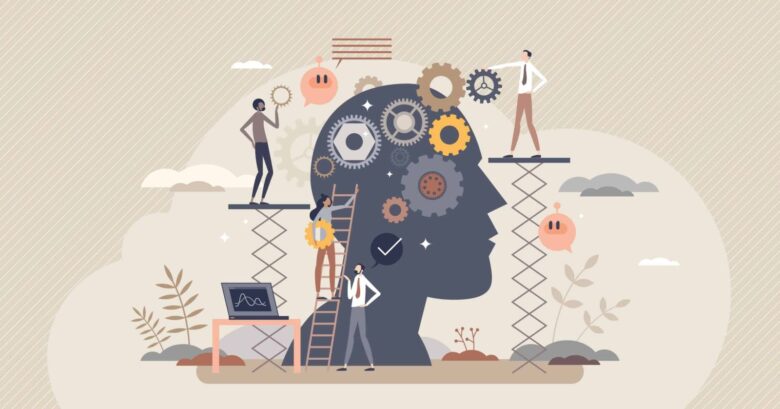
Source: altoida.com
Learning is not a passive acquisition of knowledge but an active and intricate cognitive process. It involves various mental operations that allow us to acquire, process, store, and retrieve information. By understanding the cognitive processes involved in learning, we can optimize our learning strategies and make the most of our educational experiences.
Explanation of the Stages of Learning (Attention, Encoding, Storage, Retrieval)
- Attention: The first stage of learning is attention, which involves selectively focusing on relevant information while filtering out distractions. Attention determines what enters our consciousness and has a significant impact on subsequent cognitive processes. Factors such as motivation, interest, and novelty influence attention and can enhance or hinder learning.
- Encoding: Encoding refers to the process of transforming sensory information into a meaningful and usable form. During encoding, we make connections between new information and existing knowledge, which facilitates understanding and retention. Effective encoding strategies include elaboration (relating new information to prior knowledge), organization (structuring information into meaningful chunks), and visualization (creating mental images).
- Storage: Storage involves the retention of encoded information over time. Information is stored in various memory systems, including sensory memory, short-term memory, and long-term memory. Sensory memory briefly holds sensory information, while short-term memory holds information temporarily. Long-term memory has a vast capacity and is responsible for the long-term storage of information.
- Retrieval: Retrieval is the process of accessing stored information from memory when needed. It involves reconstructing previously encoded and stored information and bringing it back into consciousness. Successful retrieval depends on effective cues and prompts that activate the relevant memory traces. Retrieval practice, such as self-testing, strengthens memory and enhances long-term retention.
These stages of learning are interconnected and interact with each other throughout the learning process. Attention influences encoding by determining what information is processed and encoded. Effective encoding enhances storage, as well-organized and elaborately encoded information is more likely to be stored in long-term memory.
During retrieval, attention and cues play a crucial role in accessing and reconstructing the desired information from memory. This interplay of cognitive processes emphasizes the importance of adopting holistic and integrated learning strategies.
The Role of Memory in Learning
Memory plays a critical role in the learning process, as it enables us to retain and retrieve information. Understanding the different types of memory, the processes involved in memory formation and retrieval, and strategies for optimizing memory can greatly enhance learning outcomes.
Explanation of the Different Types of Memory
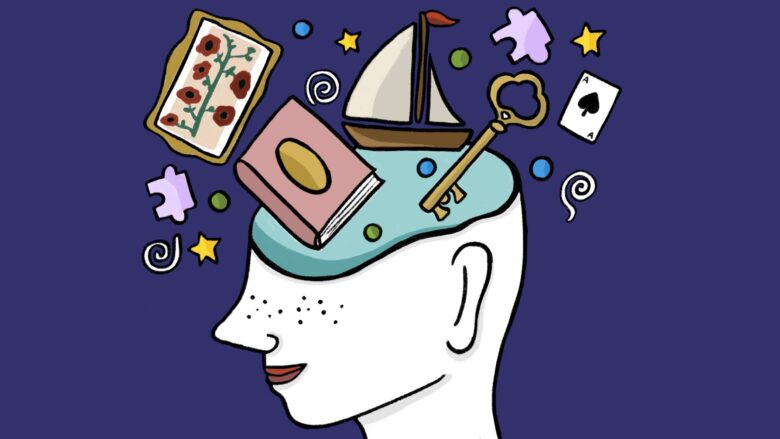
Source: cnbcfm.com
- Sensory Memory: Sensory memory is the initial stage of memory, where sensory information from our environment is briefly stored. It has a large capacity but a short duration. Different sensory modalities have their own sensory memory systems, such as iconic memory (visual) and echoic memory (auditory).
- Short-Term Memory: Short-term memory, also known as working memory, is responsible for temporarily holding and manipulating information. It has a limited capacity and a brief duration, typically lasting around 20-30 seconds without rehearsal. Short-term memory is crucial for immediate tasks, such as problem-solving and comprehension.
- Long-Term Memory: Long-term memory is the vast and enduring storehouse of our knowledge and experiences. It has an almost unlimited capacity and can last from minutes to a lifetime. Long-term memory is further divided into explicit (conscious) and implicit (unconscious) memory. Explicit memory includes episodic memory (personal experiences) and semantic memory (general knowledge). Implicit memory refers to non-conscious memory, such as procedural memory (skills and habits).
Discussion of the Processes of Encoding, Consolidation, and Retrieval
- Encoding: Encoding is the process of transforming information into a memory representation that can be stored and later retrieved. Effective encoding involves attention, elaboration (making connections with existing knowledge), organization (structuring information), and rehearsal (repeating and reviewing).
- Consolidation: Consolidation refers to the stabilization and strengthening of memories over time. It involves the transfer of information from short-term memory to long-term memory through processes such as synaptic changes and neural reorganization. Consolidation is influenced by factors such as sleep, repetition, and emotional significance.
- Retrieval: Retrieval is the process of accessing stored information from memory when needed. It involves reconstructing previously encoded and stored information and bringing it back into consciousness. Successful retrieval depends on effective cues and prompts that reactivate the relevant memory traces.
Strategies for Optimizing Memory Retention and Retrieval during Learning
- Spacing and Distributed Practice: Spacing out learning sessions over time, also known as spaced repetition, promotes better long-term retention compared to cramming. Distributing practice and review sessions allows for more effective encoding and consolidation.
- Elaborative Encoding: Connecting new information to prior knowledge and creating meaningful associations facilitates encoding and enhances memory retrieval. Elaboration techniques include summarizing, explaining concepts in your own words, and creating analogies or visual representations.
- Retrieval Practice: Actively retrieving information from memory through self-testing or practice quizzes strengthens memory retrieval pathways and enhances long-term retention. Regular retrieval practice boosts memory recall and strengthens knowledge retrieval during real-world situations.
- Visualization and Mnemonic Devices: Utilizing visual imagery or creating mnemonic devices (memory aids) can enhance encoding and make information more memorable.
- Contextual Learning: Embedding learning in meaningful contexts, such as real-world applications or personal experiences, aids in memory encoding and retrieval.
- Active Learning and Engagement: Actively engaging with the material through discussions, problem-solving, and applying knowledge enhances memory retention and retrieval.
Cognitive Load and Learning
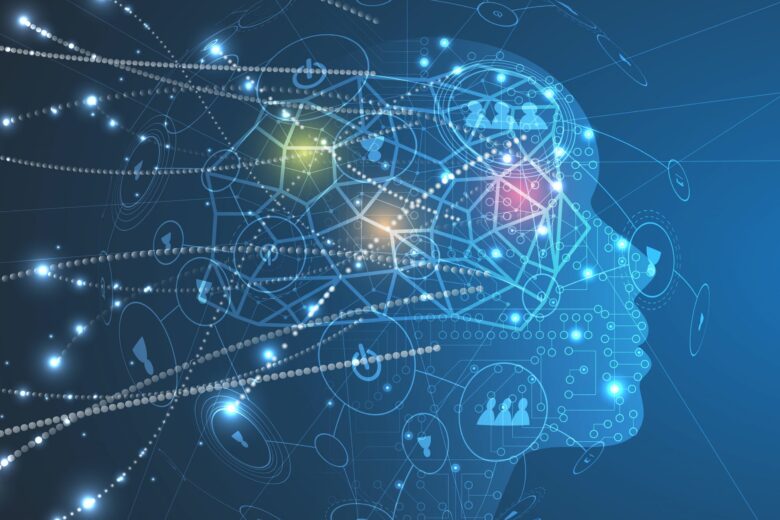
Source: keithrn.com
Cognitive load refers to the amount of mental effort required to process and learn new information. It is influenced by the complexity of the learning task and the individual’s cognitive resources. Understanding cognitive load is crucial for optimizing learning outcomes, as excessive cognitive load can impede understanding and retention.
Differentiating Between Intrinsic, Extraneous, and Germane Cognitive Load
- Intrinsic Cognitive Load: Intrinsic cognitive load refers to the inherent complexity of the learning materials or task. It is determined by the difficulty and organization of the content. Mastering complex concepts or skills inherently requires a certain level of cognitive load.
- Extraneous Cognitive Load: Extraneous cognitive load refers to the mental effort expended on irrelevant or unnecessary elements that do not contribute to learning. It arises from poor instructional design, such as overly complicated instructions, irrelevant information, or excessive visual or auditory stimuli. Reducing extraneous cognitive load allows learners to focus their cognitive resources on essential learning processes.
- Germane Cognitive Load: Germane cognitive load refers to the mental effort directed toward the acquisition and integration of new knowledge and skills. It is associated with deep processing, schema construction, and the development of cognitive schema. Germane cognitive load contributes to long-term learning and enhances learners’ cognitive abilities.
Strategies for Managing Cognitive Load to Enhance Learning Outcomes
- Simplify and Organize Information: Presenting information in a clear and organized manner reduces cognitive load. Use concise and straightforward language, provide visual aids, and break complex concepts into smaller, more manageable chunks.
- Eliminate Irrelevant Distractions: Minimize extraneous cognitive load by removing irrelevant stimuli or information that does not contribute to the learning goals. Streamline instructional materials to focus learners’ attention on essential content.
- Provide Guided Practice and Scaffolding: Offer step-by-step guidance and support during the learning process to reduce intrinsic cognitive load. Gradually increase the complexity of tasks as learners gain proficiency.
- Promote Active Learning: Engage learners in activities that require them to actively process information and apply their knowledge. Active learning approaches, such as problem-solving, case studies, and discussions, promote deep processing and enhance learning outcomes.
- Use Multimodal Learning: Present information using multiple sensory modalities (visual, auditory, kinesthetic) to facilitate better encoding and retention. Combining text, images, videos, and interactive elements can distribute cognitive load across different channels.
- Chunking and Mnemonic Devices: Group related information into meaningful chunks to reduce cognitive load. Mnemonic devices, such as acronyms or visual associations, can help learners remember complex information more effectively.
- Provide Feedback: Timely and constructive feedback guides learners’ understanding and helps them adjust their cognitive processes. Feedback helps learners manage cognitive load by providing clarification, correction, and reinforcement.
Metacognition and Self-Regulated Learning

Source: lemonlearning.com
Metacognition refers to our ability to reflect on and regulate our own thinking processes. It involves being aware of our thoughts, monitoring our understanding and learning progress, planning our learning strategies, and regulating our cognitive processes. Self-regulated learning, which encompasses metacognition, is the active and intentional control of one’s learning process.
Understanding metacognition and self-regulated learning can greatly enhance our learning effectiveness and promote lifelong learning.
Explanation of Metacognitive Processes
Monitoring: Metacognitive monitoring involves being aware of our own thinking and learning processes. It includes self-assessment, self-reflection, and self-awareness of our knowledge, comprehension, and learning progress. Monitoring helps us identify areas of confusion, gaps in understanding, or the need for additional learning strategies.
Planning: Metacognitive planning involves setting goals, selecting appropriate learning strategies, and organizing our learning activities. Planning allows us to create a roadmap for our learning journey, establish timelines, and prioritize tasks. It helps us allocate our cognitive resources effectively and adapt our strategies based on our learning goals.
Regulating: Metacognitive regulation refers to the active control and adjustment of our cognitive processes during learning. It involves self-regulation of attention, motivation, effort, and cognitive strategies. The regulation includes self-monitoring for comprehension, using strategies to enhance understanding, and adapting our learning approaches as needed. It allows us to maintain focus, overcome challenges, and optimize our learning outcomes.
Metacognition enhances learning effectiveness by enabling learners to take an active role in their learning process. Here are some ways metacognition benefits learning:
Identifying Gaps in Understanding: Metacognition helps learners recognize their own areas of confusion or lack of understanding. By monitoring their comprehension, learners can seek clarification, ask questions, and actively address knowledge gaps.
Selecting Appropriate Learning Strategies: Metacognitive awareness allows learners to choose the most effective learning strategies based on the task and their own learning preferences. This includes selecting strategies such as summarizing, self-explanation, or concept mapping, which align with their goals and promote deeper understanding.
Monitoring and Adjusting Learning Strategies: Metacognition enables learners to monitor the effectiveness of their learning strategies. If a strategy is not yielding desired results, learners can adapt and adjust their approach, seeking alternative strategies or seeking additional resources.
Self-Reflection and Self-Assessment: Metacognitive processes encourage learners to reflect on their own learning progress, strengths, and areas for improvement. By engaging in self-assessment, learners can develop a growth mindset and make intentional efforts to enhance their learning abilities.
Promoting Self-Regulation and Motivation: Metacognition supports self-regulated learning by fostering self-awareness, self-regulation, and self-motivation. Learners who are aware of their own thinking and learning processes can actively regulate their attention, effort, and motivation to maintain focus and persist in challenging tasks.
The Importance of Active Learning
Active learning is an approach to learning that encourages learners to engage actively with the content, participate in the learning process, and take responsibility for their own learning. It goes beyond passive listening or reading and promotes deeper understanding, critical thinking, and retention. Active learning provides numerous benefits to learners, including:
- Enhanced Understanding: Active learning requires learners to interact with the material, which helps them make connections, apply concepts, and develop a deeper understanding of the subject matter. By actively grappling with the content, learners can develop a more comprehensive and meaningful understanding.
- Improved Retention: Engaging actively with the material enhances memory retention. By participating in activities such as discussions, problem-solving, or application exercises, learners reinforce their learning and make the information more memorable.
- Critical Thinking Skills: Active learning fosters critical thinking skills by challenging learners to analyze, evaluate, and synthesize information. It encourages learners to question, reflect, and engage in higher-order thinking, promoting intellectual growth and problem-solving abilities.
- Collaboration and Communication Skills: Many active learning strategies involve collaborative activities, such as group discussions or projects. This fosters communication and teamwork skills, as learners interact with peers, share ideas, and learn from different perspectives.
Discussion of Strategies Such as Retrieval Practice, Spaced Repetition, and Elaboration
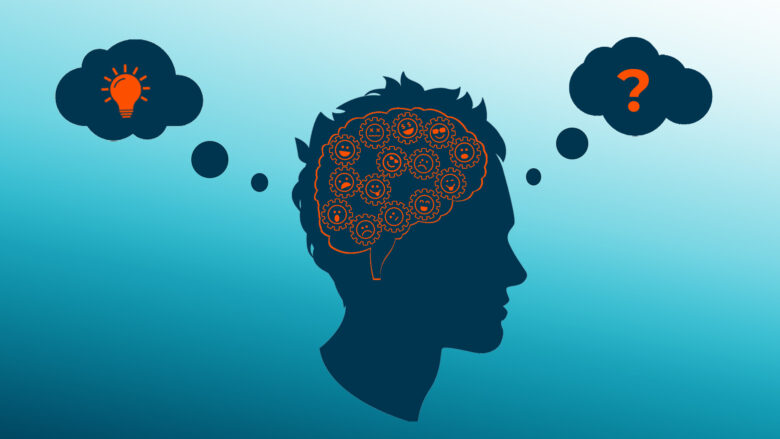
Source: ixiade.com
- Retrieval Practice: Retrieval practice involves actively recalling information from memory rather than passively reviewing it. This can be done through self-quizzing, flashcards, or practice questions. Retrieval practice strengthens memory recall and improves long-term retention.
- Spaced Repetition: Spaced repetition involves reviewing information at spaced intervals over time. By distributing study sessions and reviewing material periodically, learners reinforce their memory and improve long-term retention. Spaced repetition leverages the spacing effect, which suggests that spaced practice is more effective than massed practice.
- Elaboration: Elaboration is the process of explaining and expanding upon new information. It involves connecting new knowledge to existing knowledge, providing examples, and exploring related concepts. Elaboration promotes deeper understanding, facilitates memory encoding, and improves retention.
Examples of How Active Learning Promotes Deeper Understanding and Retention
- Classroom Discussions: Engaging in discussions allows learners to actively process information, articulate their thoughts, and exchange ideas with peers. This promotes critical thinking, helps clarify misconceptions, and deepens understanding through active participation.
- Problem-Solving Activities: Problem-solving activities challenge learners to apply their knowledge and skills to real-world scenarios. By actively engaging in problem-solving, learners develop analytical thinking, enhance their problem-solving abilities, and reinforce their understanding of concepts.
- Hands-On Experiments and Simulations: Hands-on experiments and interactive simulations provide learners with opportunities to explore concepts through direct experience. By actively manipulating variables, observing outcomes, and drawing conclusions, learners develop a deeper understanding of the subject matter.
- Role-Playing and Case Studies: Role-playing and case studies immerse learners in realistic scenarios, allowing them to actively apply their knowledge and skills. By assuming different perspectives, analyzing situations, and making decisions, learners deepen their understanding and develop critical thinking and problem-solving skills.
Active learning empowers learners to become active participants in their own learning process. By implementing strategies like retrieval practice, spaced repetition, and elaboration, learners can actively engage with the content, deepen their understanding, and enhance their retention of knowledge and skills.
The Role of Feedback in Learning
Feedback plays a crucial role in the learning process as it provides learners with valuable information about their performance and progress. It is an essential component that guides learners’ understanding, helps them identify strengths and areas for improvement, and promotes continuous growth and development.
Feedback serves as a bridge between current knowledge or skills and desired learning outcomes, making it an indispensable tool for enhancing learning effectiveness.
Discussion of Effective Feedback Principles
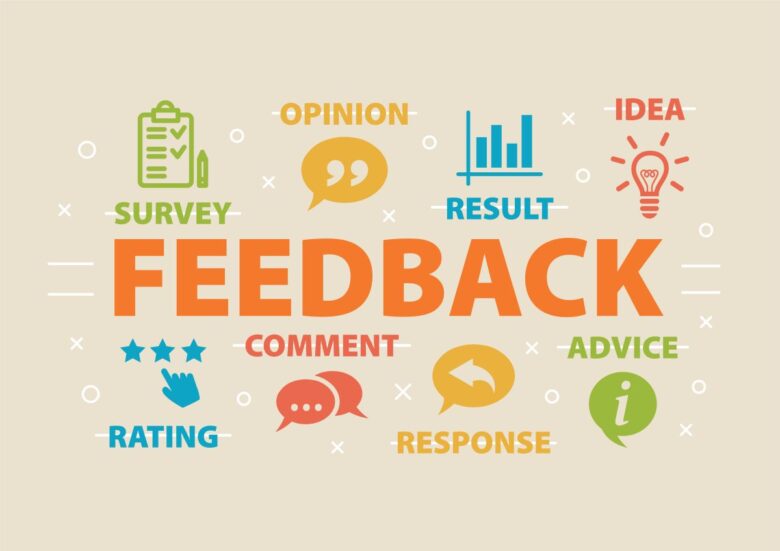
Source: newbreedrevenue.com
To be effective, feedback should adhere to certain principles that maximize its impact on learning. Here are some key principles of effective feedback:
- Timeliness: Feedback should be provided in a timely manner, ideally close to the performance or task. Timely feedback helps learners connect the feedback to their actions, allowing for immediate reflection and adjustment. Delayed feedback may diminish its effectiveness and hinder the opportunity for meaningful improvement.
- Specificity: Feedback should be specific and focused on particular aspects of performance or understanding. Specific feedback provides learners with clear guidance on what they did well and what needs improvement. It avoids generalizations and helps learners pinpoint areas to target for growth.
- Actionability: Feedback should be actionable, providing learners with specific steps or strategies to improve. It should offer suggestions for concrete actions that learners can take to enhance their learning. Actionable feedback guides learners in applying the feedback effectively and promotes an iterative process of learning and improvement.
- Constructive Tone: Feedback should be delivered in a constructive and supportive manner. It should emphasize areas for improvement while also acknowledging and reinforcing strengths. A constructive tone encourages learners to embrace feedback as a valuable resource for growth rather than as a critique of their abilities.
Strategies for Incorporating Feedback to Enhance Learning Outcomes
- Provide Timely and Formative Feedback: Offer feedback throughout the learning process, not just at the end. Regular formative feedback allows learners to make adjustments and improvements along the way. It helps them monitor their progress, reinforces correct understanding, and guides their learning journey.
- Be Specific and Concrete: Provide specific feedback that highlights strengths and identifies areas for improvement. Point out specific examples or instances where learners demonstrated proficiency or encountered challenges. Specific feedback allows learners to understand the context and take targeted actions for improvement.
- Encourage Self-Reflection and Self-Assessment: Promote self-reflection and self-assessment as part of the feedback process. Encourage learners to critically analyze their own performance and compare it to the feedback received. This helps develop metacognitive skills and fosters ownership of the learning process.
- Offer Actionable Strategies and Resources: Accompany feedback with actionable strategies and resources that support learning and improvement. Provide suggestions for additional practice, recommended readings, or specific learning activities that align with learners’ needs. This empowers learners to take concrete steps toward improvement.
- Encourage Feedback Dialogue: Foster a feedback dialogue between educators and learners. Create an environment that encourages learners to seek clarification, ask questions, and engage in a conversation around the feedback. This promotes a deeper understanding of the feedback and helps learners make better use of it.
Conclusion

Source: brookings.edu
Incorporating cognitive science principles in educational settings is crucial for optimizing learning experiences and promoting effective learning outcomes. Throughout this article, we have explored various cognitive science principles that underpin effective learning. From understanding the cognitive process of learning and the role of memory to considering learning styles, metacognition, and the importance of feedback, these principles offer valuable insights into how we learn and retain information.
By aligning educational practices with these principles, educators can create engaging and effective learning environments. By incorporating strategies such as active learning, retrieval practice, and spaced repetition, educators can enhance learners’ understanding, retention, critical thinking skills, and motivation. Furthermore, educators can adapt instructional methods to accommodate individual differences in learning preferences, promoting inclusive learning environments that cater to diverse strengths and needs.
However, it’s not just the responsibility of educators; learners also play a vital role in applying these cognitive science principles to their own learning practices. Learners can actively engage with the content, seek opportunities for reflection, practice retrieval, and self-regulate their learning process. By taking ownership of their learning and applying evidence-based strategies, learners can enhance their understanding, retention, and overall learning effectiveness.
As the field of cognitive science in education continues to evolve, it is essential for educators and learners to stay informed about new research findings and advancements. By keeping up with the latest developments in cognitive science, educators can refine their instructional methods, incorporate innovative strategies, and continuously improve their teaching practices. Similarly, learners can benefit from understanding the science behind effective learning, empowering themselves to make informed decisions about their learning approaches.
In conclusion, cognitive science principles provide a solid foundation for enhancing learning experiences. By applying these principles in educational settings, we can create learning environments that foster deep understanding, critical thinking, and lifelong learning. Let us embrace these principles, collaborate, and continue exploring the evolving field of cognitive science in education to unlock the full potential of our teaching and learning experiences.
References
Some well-known journals in the field of educational psychology and cognitive science include:
- Journal of Educational Psychology
- Quizzma – a free test answers and practice test website
- Learning and Instruction
- Cognitive Psychology
- Educational Psychologist
- Journal of Experimental Psychology: Learning, Memory, and Cognition
